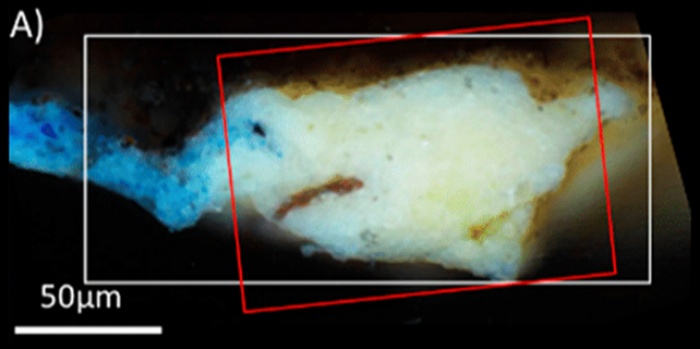One Rare chemical compound detected in Mona Lisa paintingWhat Leonardo da Vinci wrote reinforces the idea that the Renaissance genius was a great fan of experimentation in his work. This is plumbonacrite, as detailed in the recently published study. Journal of the American Chemical Society.
Like other paintings of the early 16th century, La Gioconda was painted on wooden panels that had to be treated with a base coat of paint before the original paint was applied. Artists of the time used plaster, but Da Vinci preferred something different.
To thicken the paint layers that will cover the panel, mixed oil with lead(II) oxide. Orange pigment is known for its toxicity, but as experts involved in the study explained, it has specific drying properties for paint.
Researchers from the United Kingdom and France examined Leonardo da Vinci’s manuscripts, looking for references to the use of the chemical element in his paintings. But they found that lead was mentioned only in pharmaceutical recipes.
Detection of chemical element
The presence of plumbonacrite in the Mona Lisa was detected when the team analyzed a micro sample of the painting exhibited in the Louvre Museum in Paris (France). They used X-ray diffraction and infrared spectroscopy techniques for the study.
With the help of the European Synchrotron Radiation Facility (ESRF) particle accelerator, researchers detected not only oil and lead as expected. There was also a rarer compound, plumbonacrite..

It is believed to be formed after the reaction between lead and the oil used to prepare the panels. Italian Renaissance icon, experts say Dissolve the chemical element in linseed or walnut oil to obtain an even thicker mixture..
“He was someone who loved to experiment, and each of his paintings is technically completely different,” emphasized chemist Victor Gonzalez. Associated press. The leader of the research is a representative of the National Scientific Research Center.
Occurrence of the chemical compound in other works
Micro samples from The Last Supper, another famous work by da Vinci, were analyzed with X-ray and infrared spectroscopy. The result was the same for the painting made for the Church of Santa Maria delle Grazie in Italy. detection of oil, lead oxide and plumbonacrit in.
The absence of this mixture in other Renaissance works suggests the pioneering spirit of the Italian painter, although there are signs of its presence in Rembrandt’s Night Watch. The work was painted by the Dutch artist in 1642, almost 150 years later.
Did you like the content? So, stay up to date with more curiosities like this from the world of science at TecMundo and take the opportunity to learn what we can learn when we look at the Universe in infrared.
Source: Tec Mundo
I’m Blaine Morgan, an experienced journalist and writer with over 8 years of experience in the tech industry. My expertise lies in writing about technology news and trends, covering everything from cutting-edge gadgets to emerging software developments. I’ve written for several leading publications including Gadget Onus where I am an author.












